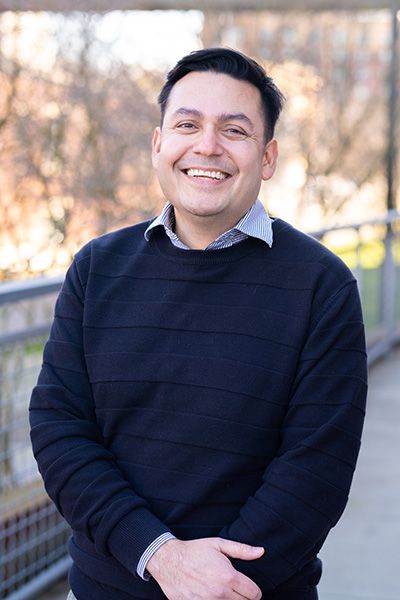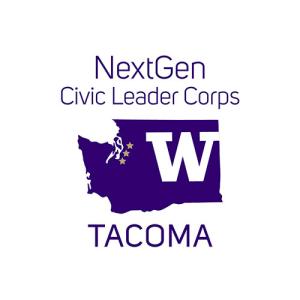
A Revolutionary Act
Walking isn't just good for you, according to Assistant Professor Rubén Casas. It is also a good way to understand how a city works.
Cars and trucks have been around only for a little over a hundred years. Yet, in that time, these inventions have managed to completely change how people live their lives. In the first few decades of the twentieth century it would not have been uncommon to see horses, pedestrians, bikes and even trolleys on the same road as automobiles. Early cars were expensive, unreliable and loud. The first internal combustion vehicles were dubbed “stink chariots.”
There are currently about 280 million registered automobiles in the United States. They’re popular but that’s not the same as inevitable. When it comes to automobiles, one gets the sense things could have gone another way had vehicles remained costly and hard to maintain. We’ll never know that history. The introduction of the assembly line helped to bring down the cost of automobiles. Advances in technology made them quieter, more reliable and less offensive to the senses.
The widespread use of cars and trucks changed how cities were designed with an emphasis moving away from people and toward automobiles. Gone were mixed modal streets. Pedestrians were literally kicked to the curb. Horses and bikes were sold. Rail lines were ripped up and paved over.
The automobile era is complicated and fraught with tension. The car proved to be a faster and more convenient way to get around, but that convenience brought with it pollution and sprawl, among other things. This is a car’s world — for now — which helps explain why UW Tacoma Assistant Professor Rubén Casas describes walking as a “revolutionary act.”
Casas came to campus from California State University, Fresno (CSUF) in 2018. He wanted to get to know his new home, so he put on a pair of comfortable shoes and starting walking around different neighborhoods. “Walking for me is a way of knowing,” he said. “It’s a very slow process that encourages you to take notice of what’s around you and who’s around you.”
For Casas, taking a walk, especially in a city, is about more than exercise or even getting to know one’s surroundings. “You’re offering a rebuttal to the city,” he said. “You’re saying, ‘No, this is how I want to be here.' Cities in the U.S. have largely been developed around the car as the unit of mobility and when we get out of the car and we walk, we’re basically reclaiming that space for humans.”
A Suitcase Full of Frozen Food

— Assistant Professor Rubén Casas
Casas is the youngest of five children. He grew up in Anaheim. “I come from a single parent household,” said Casas. “My dad passed away when I was a baby.”
The young Casas showed a knack for writing. He won awards for stories he’d written, but when it came time for college Casas originally wanted to major in vocal performance. “I took all these music theory exams and realized there was a ton of math involved, which made me a little uneasy,” he said.
A first-generation student, Casas earned an associate’s degree at a local community college before transferring to Chapman University where he completed a bachelor’s and master’s in creative writing. He followed that up with a master of fine arts in creative writing from Oregon State University and a Ph.D. in rhetoric and composition from the University of Wisconsin-Madison.
Along the way Casas got help from his professors and his family. “I don’t know if I charted my path so much as there were good people along the way that helped me in ways that they could,” he said. “My mom supported me in all the ways I think a parent that has no idea what you’re doing in college could support you. I could come home and do laundry or she would fix me meals sometimes. When I came back from Wisconsin to see her I would return home with frozen food in my luggage.”
Mobile Lab
Casas took an assistant professor position at CSUF after completing his doctorate. It’s here that he developed an interest in cities, specifically how they are designed, who they’re designed for and the impact that has on individuals and communities. “Fresno is an agricultural hub and has always had a significant Latino and Asian population,” said Casas. “However, the way the city is run and the policies that are created don’t reflect the minority majority population that lives there and I started wondering why that is.”
Scholarship isn’t just in books and journals. Research doesn’t always take place in a lab. Casas lived in Fresno for two years. During that time, he read up on the city’s history and he also started going for walks — long, deliberate treks down main thoroughfares and side streets.
What he found was a segregated city. White residents live in the more suburban part of town whereas Fresno’s Black, Latino and Asian population lived in the more urban areas. “I started to think about how marginalized people find meaning and how they create space for themselves in places that aren’t designed with their interests in mind,” said Casas. “Fresno became a case study in how the built environment can be weaponized against people that already don’t have a lot of power.”
Casas’ burgeoning interest in the built environment morphed into a research project with UW Tacoma Associate Professor Anaid Yerena that looks at the impact of long commute times on civic engagement. “People are spending so much time in their cars and we want to know if that’s impacting their ability to spend time with others in the neighborhood,” said Casas.
A second part of the study involves parks. “Tacoma has a lot of great parks and these parks are centered around neighborhoods,” said Casas. “So, we thought one place we could measure whether people are being impacted by these long commutes is by seeing if they’re using parks and, if so, how.”
The project isn’t complete. Yerena and Casas are still collecting data through observations and through surveys distributed to local residents. In the meantime, Casas is continuing to explore these issues in such publications as The Urbanist and Crosscut. Casas has been a regular contributor to Crosscut for a year and his most recent piece discusses what it will take for Tacoma to become an antiracist city.
Interactive Democracy
Casas believes walking is a path to knowing. Well, what if you can’t get to where you want to go? “You see this in cities, including Tacoma, where there’s a road, but no sidewalk or the sidewalk is uneven,” he said. This barrier to access extends to other ways of getting around. “What if where you want to go isn’t served by public transportation or what if those services run on a limited schedule?”
The point Casas makes is that cities built around cars are asking their residents to depend on cars. This raises questions about equity and individual rights as well as larger questions about why cities favor one group over another.
There’s also a larger issue that might go unnoticed if you’re zooming past at 35 miles-an-hour. “Sidewalks and parks are public spaces, where you meet people,” said Casas. “I just don’t think people are getting enough opportunities to meet their neighbors, to get to know who lives on their street.”
Casas says these impromptu conversations and planned get togethers are an important part of democracy. “I think we have a better functioning and more just democracy when we are having interactions with others,” he said. “We get to know strangers and are exposed to different viewpoints.”
Seen this way, walking isn’t just a radical act, it’s a fundamental one.



